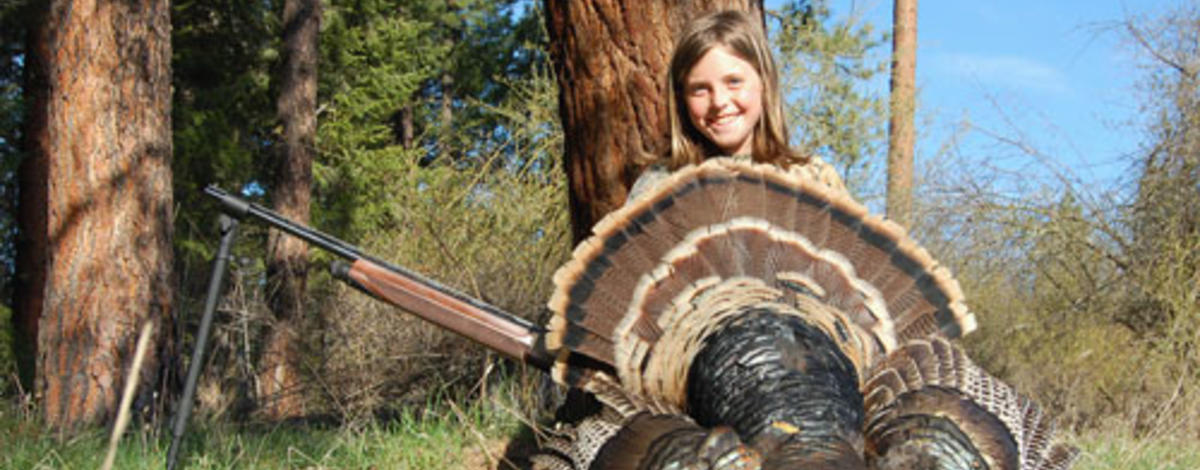While hunting wild turkeys in the fall often takes a back seat to big game, waterfowl and upland bird hunting, pursuing the elusive birds in the fall has its advantages.
“Hunting turkeys in the fall can be just as exciting as in the spring,” said Jeff Knetter, Fish and Game upland game and migratory game bird program manager. “Plus in some places, you will likely have the woods all to yourself.”
For hunters looking to put a wild bird on their Thanksgiving or Christmas table, Idaho’s Panhandle and Clearwater regions both offer general fall hunting seasons and hold the majority of the state’s birds.
The general season in the Panhandle runs through December 31 in management units 1, 2 (except Farragut State Park and Farragut WMA) 3, 4, 4A, 5 and 6. In the Clearwater, the season runs November 21 through December 31 on private lands only in management units 8, 8A, 10A, 11, 11A, 13, 14, 15, 16, and 18. For the purpose of this hunt, "private lands" do not include corporate timberlands.
The daily bag limit is one turkey (either sex) per day in the fall, except in Units, 1, 2, 3 and 5 where five turkeys (either sex) may be taken in a day during fall seasons.
Hunters must have a valid Idaho hunting license and a General, Extra, or Special Unit tag. Special unit tags are valid only for the fall season in Units 1, 2, 3 or 5.
A general fall season also occurs in southeast Idaho, but that season ended Oct. 31.
For more information, review pages 16-25 of the 2016 & 2017 Upland Game, Furbearer and Turkey Seasons and Rules booklet available at all Fish and Game license vendors and online at https://idfg.idaho.gov/hunt/rules/upland-furbearer-turkey.
Fall turkey hunts in Idaho have expanded over the years as turkey populations have increased. Quality hunting can be found on both public and private lands, and finding a place to hunt can be as easy as looking at a map or asking a landowner for permission.
“Many landowners will welcome hunters because they want turkey flocks reduced on their lands,” Knetter said. “But it’s critical hunters always ask for permission first, and if allowed to hunt, always follow the landowner’s wishes.”
Because it is not uncommon for several hundred turkeys to congregate on or near private property where livestock is fed or crops being stored, the damage and nuisance they can cause can quickly become a problem. Providing additional harvest opportunity, particularly in the fall and winter when the birds are concentrated, is the best way to address landowner concerns.
Hunters will need to adjust their hunting tactics during the fall, as there is little or no gobbling activity, and gobblers are in small flocks. Hens and young of the year are together in larger flocks that may contain dozens of birds. The basic hunting strategy is to find and break up a flock, scattering them in all directions. Hunters then wait as near as possible to the spot where the flock was first encountered. Younger birds will usually return within an hour while an old gobbler may take three to four hours.
“The sounds and sight of dozens of turkeys returning to you from all directions can be as exciting as calling in a spring gobbler,” said Knetter.
Fall turkey hunting presents some unique safety concerns, as turkey hunters dress in complete camouflage, make the sound of a turkey, and often conceal themselves in dense vegetation. They also share the woods with camouflaged big game hunters in some areas, and because either sex is legal game in the fall, some hunters may put less emphasis on identifying their target.
“All hunters must be especially diligent about safety,” said Knetter. “Hunters must always be certain of their target and what is beyond before pulling the trigger.”
Fish and Game encourages hunters to follow the basic rules of safe turkey hunting:
Be sure to look beyond an approaching bird to see whether other hunters are in the line of fire before firing.
- Never wave, whistle, or make turkey calls to alert an approaching hunter to your presence. Always shout to reveal your presence to an approaching hunter.
- Pattern your shotgun, learn its effective range, and learn to accurately judge distances. Always shoot at the head and neck to ensure a clean kill.
- Never wear red, white, blue, or black in the turkey woods.
- Always clearly identify your target before firing.
- Never assume you are the only hunter in the area. Assume every sound or movement is another hunter until you can safely identify it as otherwise.
- Once you have a turkey in hand, tag it and cover with a hunter orange ribbon to carry it out of the woods.

